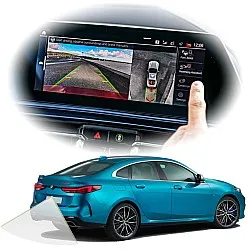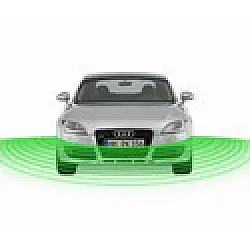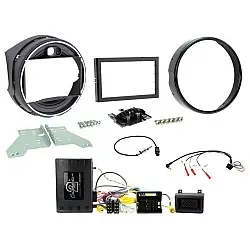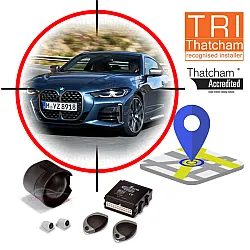Should reversing cameras be made mandatory?
Road deaths are experiencing a steady decline here in the UK, but still more than 1700 people are dying on Britain’s roads every year. It’s an even bigger problem globally, with 1.25 million people dying in road accidents annually. Road safety is still a huge global issue, so it’s no surprise that reducing the number of road deaths - especially those of vulnerable road users - is a key item on the agenda of many countries.
The USA in particular has recently chosen to introduce stringent new measures to cut down on road deaths - namely, they’re making reversing cameras a legal obligation for manufacturers to fit to every new vehicle. The expectation is that this will cut the number of deaths by 95 lives a year - which works out to saving a human life once every few days or so. So what could the UK learn from America’s example, and should reversing cameras be made mandatory here?
A new era in automotive safety
Contrary to what you might expect, the US proposal is actually not all that new - it was first tabled by the Bush administration, all the way back in 2008. Its implementation was delayed several times, and it’s only recently started being enforced by the US Department of Transport. Now, all American cars, regardless of their size or make, must include a reversing camera (also known across the pond as backup cameras) as standard - not as an optional extra. This even includes entry level vehicles from the most affordable brands, such as Peugeot and Vauxhall - trading over there by the name of Opel.
The official expectation is that the relatively new laws will reduce the risk of ‘backover accidents’, where drivers fail to spot obstructions, pedestrians, other forms of transport such as scooters and especially children behind them as they reverse their vehicle. Recent statistics indicated that there were 292 deaths and 18,000 injuries a year in the US alone, just from backover accidents. 44% of the deaths were those of children under the age of 5.
How will reversing cameras help?
Part of the problem derives from the fact that many American vehicles are typically far bulkier and heavier than their UK counterparts, partially because they often have further to travel and they therefore tend to be more heavily relied upon by their owners to get them around in harsher environments and weather conditions, such as large deserts or snow. The larger sizes of these vehicles therefore mean that visibility for the driver is slightly decreased, and they’re not quite as easy to handle.
As the result of studies like the one we touched on above, authorities were led to conclude that children under the age of 7 were the most at risk, since they were often mobile enough to briefly get away from their parents, but not tall enough to enter the driver’s field of vision as they reversed. However, reversing cameras provide a complete, unbroken field of view right down to the pavement, so that the height and size of vulnerable road users is far less of a factor - making reversing cameras an exceptionally prudent choice for increasing the driver’s field of view in big vehicles like Chevrolets.
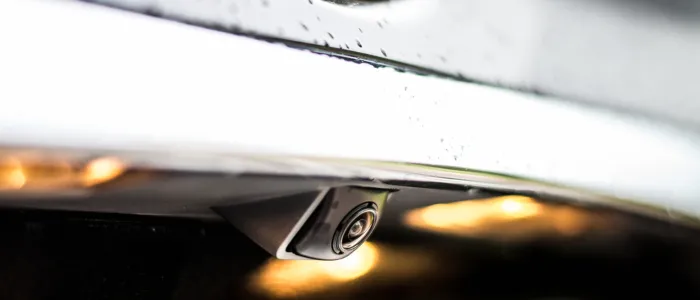
So will similar laws be implemented in the UK?
Exact statistics on this side of the Atlantic are harder to come by when it comes to backover accidents. The Royal Society for the Prevention of Accidents said that 28 children had been killed on or near the driveways of their homes between 2008 and 2010, but since these deaths aren’t entered into the road accident recording system, detailed estimates are difficult to quantify.
However, that doesn’t mean that reversing camera technology hasn’t already taken hold in the UK. 1.8 million vehicles a year are available with collision warning systems alone, with sales of this tech rising by 20% between 2017 and 2018. What’s more, statistics from the British Health and Safety Executive released earlier this month showed that ‘struck by a moving vehicle’ was still one of the UK’s leading causes of workplace fatalities. 30 people died from their injuries in these sorts of collisions between March 2018 and March 2019, demonstrating that there is still lots of work to be done in improving vehicle safety on-site.
It seems to be increasing the mounting pressure on the UK’s own Department for Transport, who are currently considering the wide-ranging plans to implement reversing car cameras as standard. Countries like Australia are already moving to follow America’s lead, and the UK is also in the midst of considering how European legislation will help determine our own standards.
What options do UK drivers have?
If you’ve taken a look through our own reversing camera products here at Car Communications, you’ll know that there’s a lot of variation between individual models, but they all share the same basic functionality; using sensors to remotely switch on a screen whenever the vehicle is shifted into reverse, showing drivers any impending obstacles so that they can carefully and confidently navigate out of tight spaces like residential streets and busy shopping centres.
You can browse our vast range of reversing cameras right here on Car Communications - we’ve got specialised models for all sorts of different car makes, ranging from Renault to Citroen to Audi. If you’ve got any questions that need answering, our friendly team of experts is here to help - just give us a call on 01254 694 537, and we’ll be happy to see what we can do!



































































